Abstract
Carbon isotope discrimination (Δ) was analyzed in leaf starch and soluble sugars, which represent most of the recently fixed carbon. Plants of three C3 species (Populus nigra L. × P. deltoides Marsh., Gossypium hirsutum L. and Phaseolus vulgaris L.) were kept in the dark for 24 hours to decrease contents of starch and sugar in leaves. Then gas exchange measurements were made with constant conditions for 8 hours, and subsequently starch and soluble sugars were extracted for analysis of carbon isotope composition. The ratio of intercellular, pi, and atmospheric, pa, partial pressures of CO2, was calculated from gas exchange measurements, integrated over time and weighted by assimilation rate, for comparison with the carbon isotope ratios in soluble sugars and starch. Carbon isotope discrimination in soluble sugars correlated strongly (r = 0.93) with pi/pa in all species, as did Δ in leaf starch (r = 0.84). Starch was found to contain significantly more 13C than soluble sugar, and possible explanations are discussed. The strong correlation found between Δ and pi/pa suggests that carbon isotope analysis in leaf starch and soluble sugars may be used for monitoring, indirectly, the average of pi/pa weighted by CO2 assimilation rate, over a day. Because pi/pa has a negative correlation with transpiration efficiency (mol CO2/mol H2O) of isolated plants, Δ in starch and sugars may be used to predict differences in this efficiency. This new method may be useful in ecophysiological studies and in selection for improved transpiration efficiency in breeding programs for C3 species.
Full text
PDF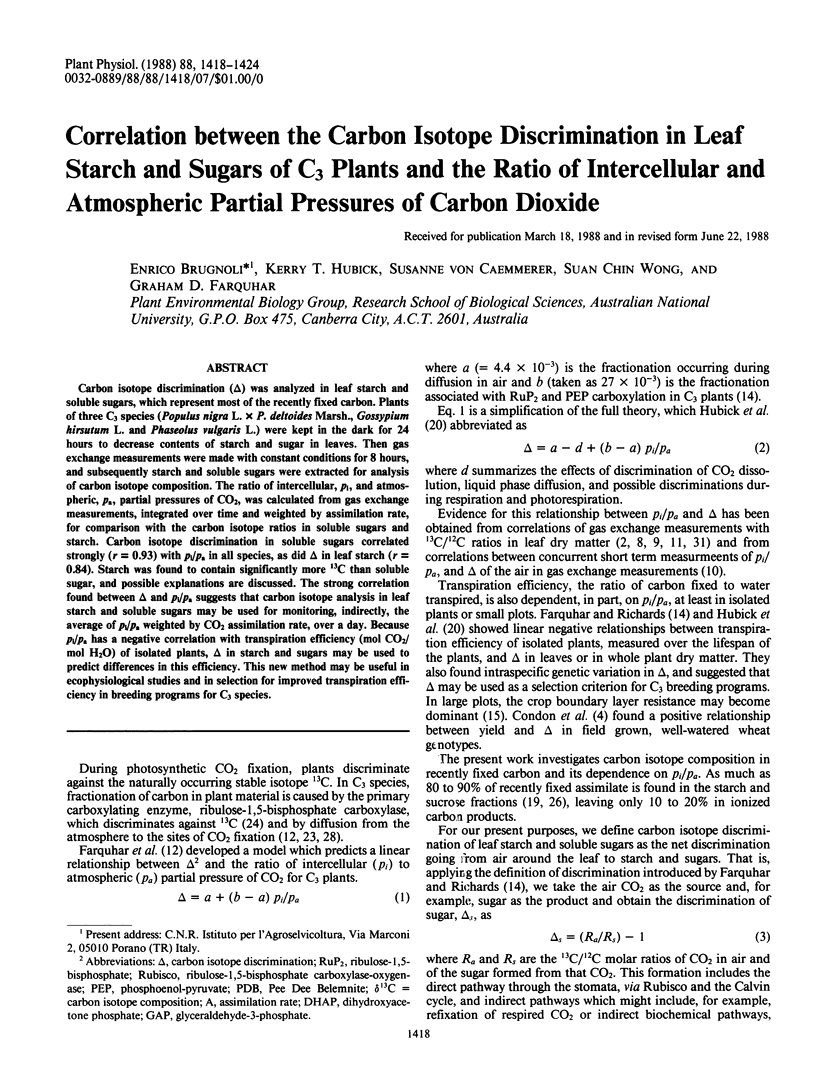
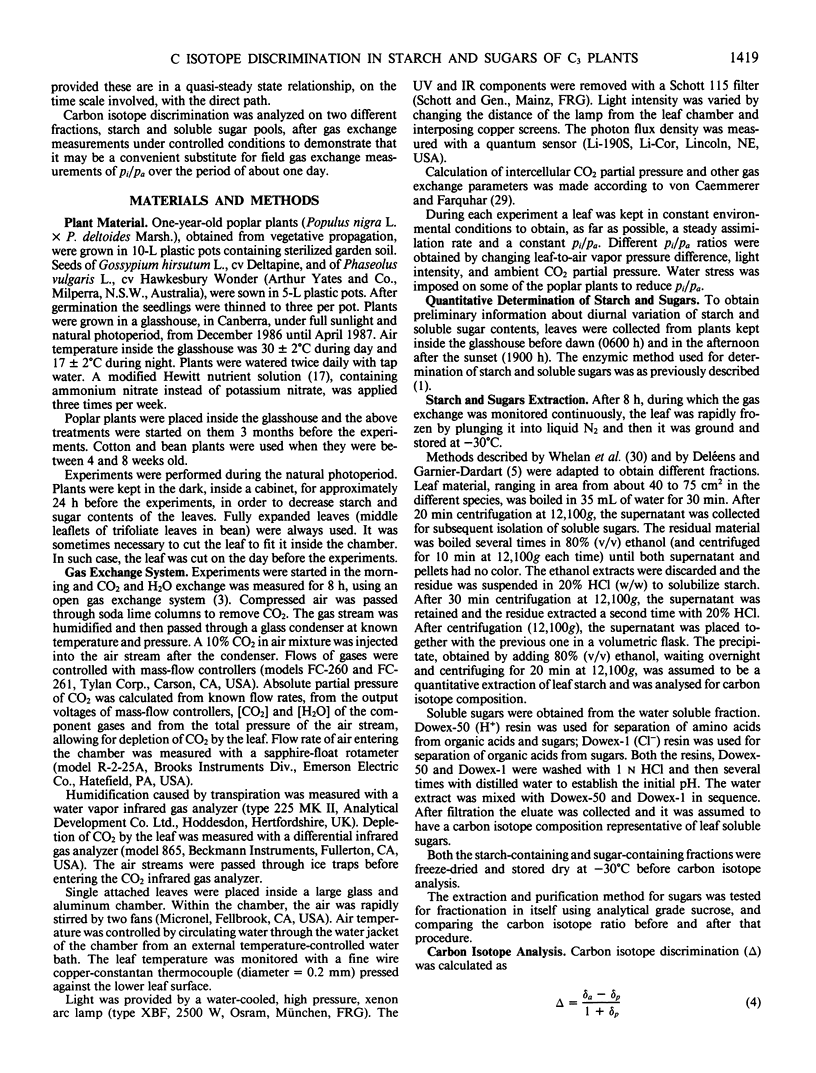
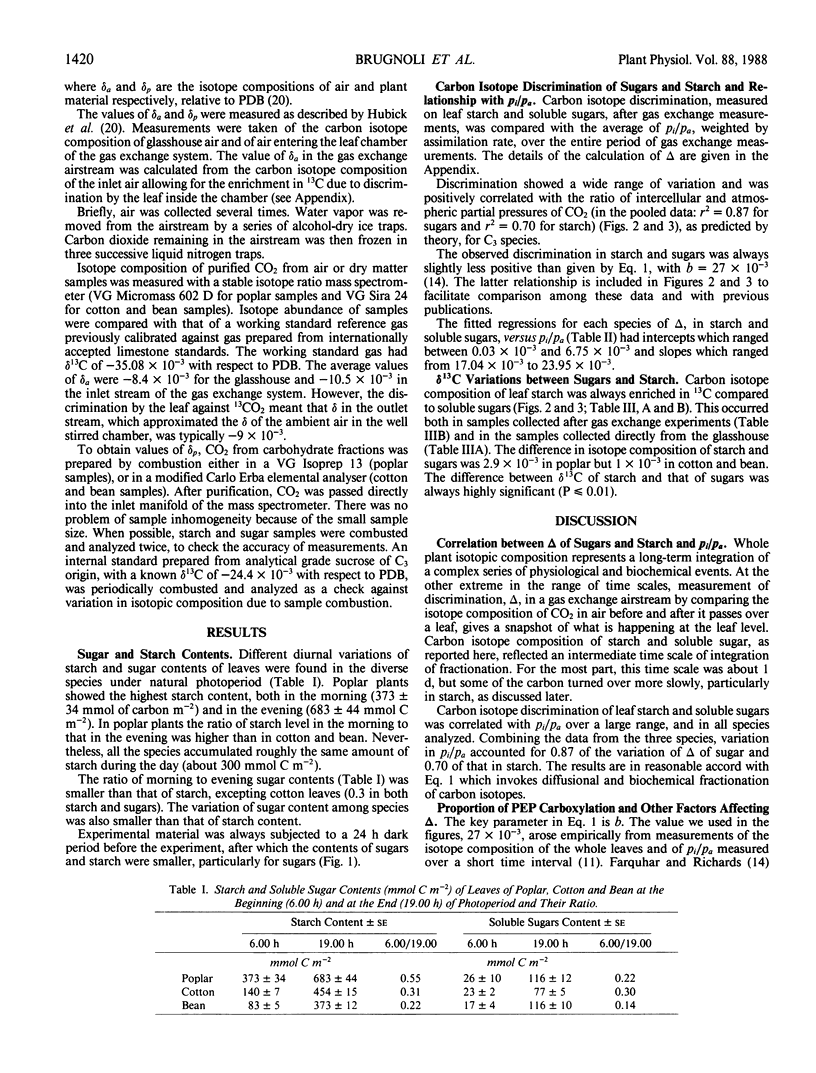

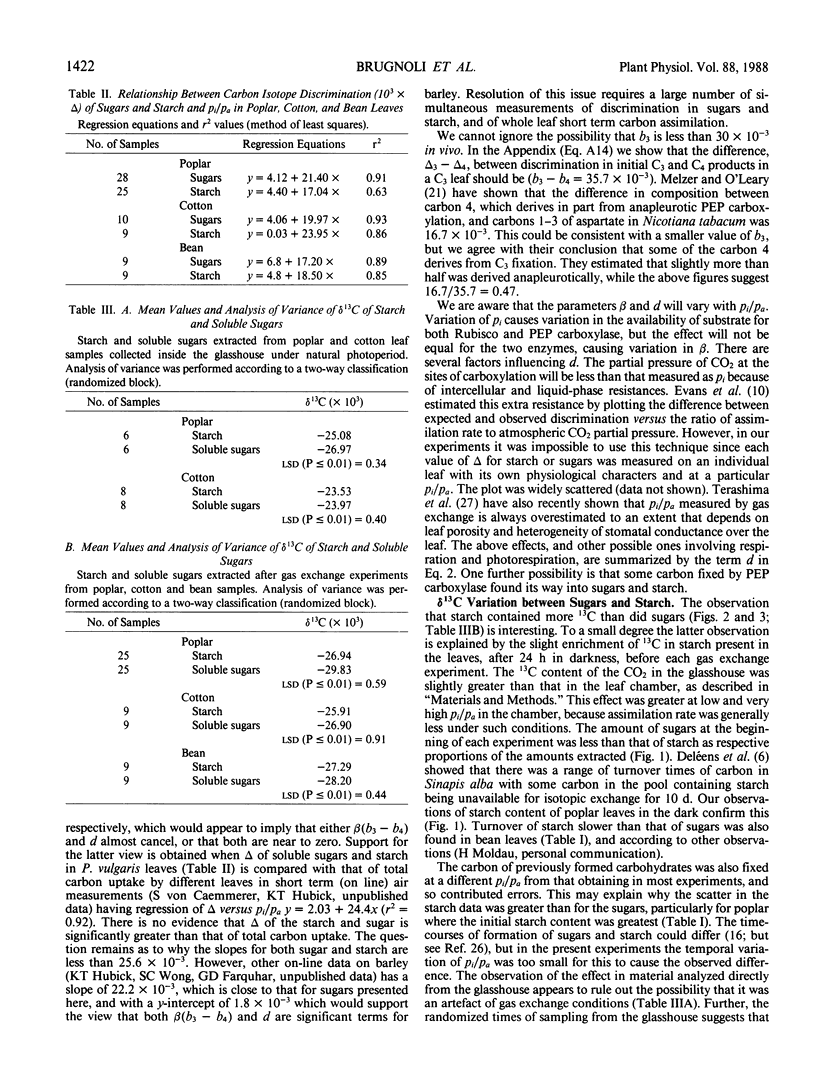
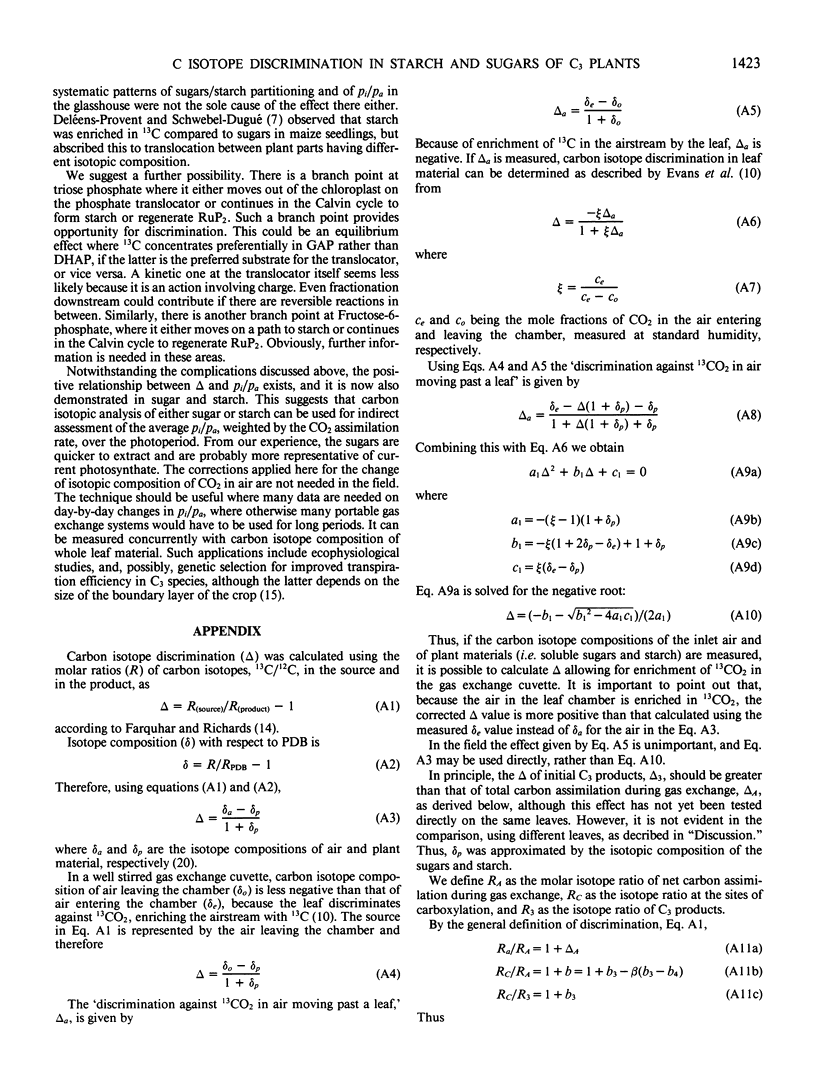
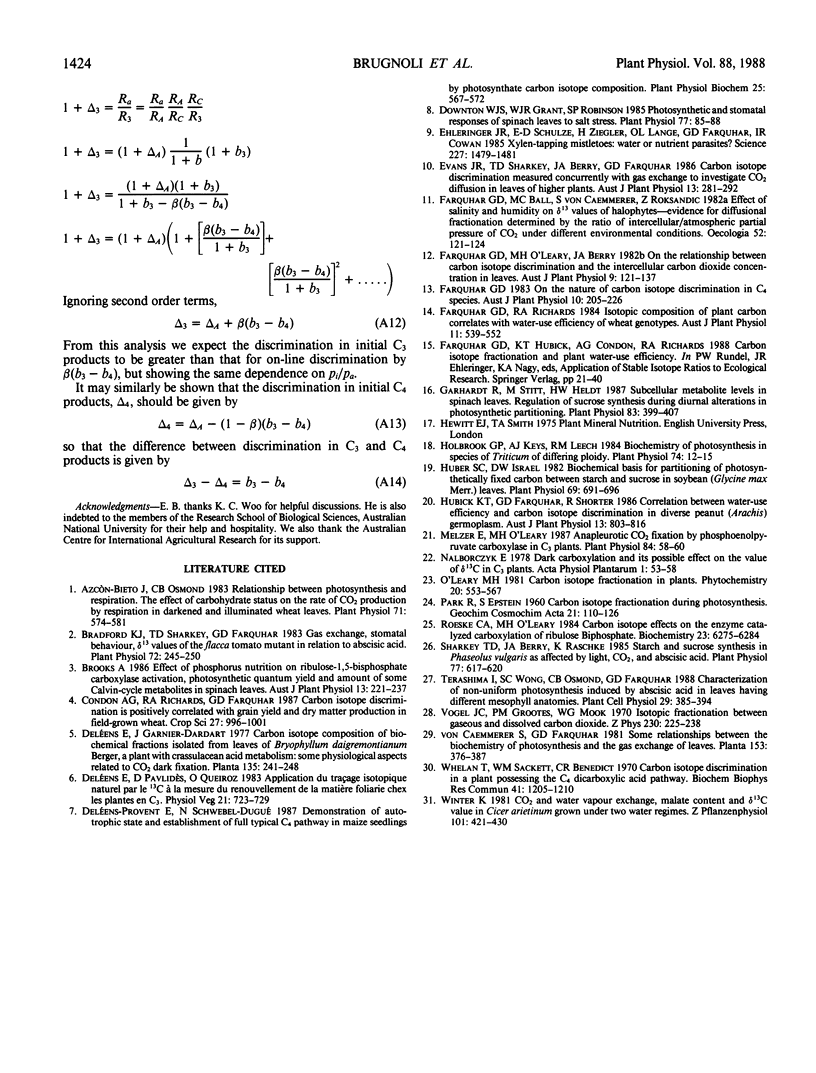
Selected References
These references are in PubMed. This may not be the complete list of references from this article.
- Azcón-Bieto J., Osmond C. B. Relationship between Photosynthesis and Respiration: The Effect of Carbohydrate Status on the Rate of CO(2) Production by Respiration in Darkened and Illuminated Wheat Leaves. Plant Physiol. 1983 Mar;71(3):574–581. doi: 10.1104/pp.71.3.574. [DOI] [PMC free article] [PubMed] [Google Scholar]
- Bradford K. J., Sharkey T. D., Farquhar G. D. Gas Exchange, Stomatal Behavior, and deltaC Values of the flacca Tomato Mutant in Relation to Abscisic Acid. Plant Physiol. 1983 May;72(1):245–250. doi: 10.1104/pp.72.1.245. [DOI] [PMC free article] [PubMed] [Google Scholar]
- Downton W. J., Grant W. J., Robinson S. P. Photosynthetic and stomatal responses of spinach leaves to salt stress. Plant Physiol. 1985 May;78(1):85–88. doi: 10.1104/pp.78.1.85. [DOI] [PMC free article] [PubMed] [Google Scholar]
- Ehleringer J. R., Schulze E. D., Ziegler H., Lange O. L., Farquhar G. D., Cowar I. R. Xylem-tapping mistletoes: water or nutrient parasites? Science. 1985 Mar 22;227(4693):1479–1481. doi: 10.1126/science.227.4693.1479. [DOI] [PubMed] [Google Scholar]
- Gerhardt R., Stitt M., Heldt H. W. Subcellular Metabolite Levels in Spinach Leaves : Regulation of Sucrose Synthesis during Diurnal Alterations in Photosynthetic Partitioning. Plant Physiol. 1987 Feb;83(2):399–407. doi: 10.1104/pp.83.2.399. [DOI] [PMC free article] [PubMed] [Google Scholar]
- Holbrook G. P., Keys A. J., Leech R. M. Biochemistry of photosynthesis in species of triticum of differing ploidy. Plant Physiol. 1984 Jan;74(1):12–15. doi: 10.1104/pp.74.1.12. [DOI] [PMC free article] [PubMed] [Google Scholar]
- Huber S. C., Israel D. W. Biochemical Basis for Partitioning of Photosynthetically Fixed Carbon between Starch and Sucrose in Soybean (Glycine max Merr.) Leaves. Plant Physiol. 1982 Mar;69(3):691–696. doi: 10.1104/pp.69.3.691. [DOI] [PMC free article] [PubMed] [Google Scholar]
- Melzer E., O'leary M. H. Anapleurotic CO(2) Fixation by Phosphoenolpyruvate Carboxylase in C(3) Plants. Plant Physiol. 1987 May;84(1):58–60. doi: 10.1104/pp.84.1.58. [DOI] [PMC free article] [PubMed] [Google Scholar]
- Sharkey T. D., Berry J. A., Raschke K. Starch and Sucrose Synthesis in Phaseolus vulgaris as Affected by Light, CO(2), and Abscisic Acid. Plant Physiol. 1985 Mar;77(3):617–620. doi: 10.1104/pp.77.3.617. [DOI] [PMC free article] [PubMed] [Google Scholar]
- Whelan T., Sackett W. M., Benedict C. R. Carbon isotope discrimination in a plant possessing the C4 dicarboxylic acid pathway. Biochem Biophys Res Commun. 1970 Dec 9;41(5):1205–1210. doi: 10.1016/0006-291x(70)90214-7. [DOI] [PubMed] [Google Scholar]


